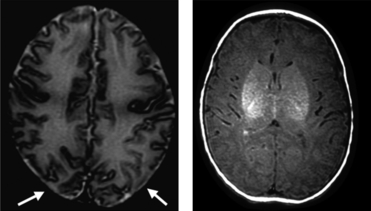Imaging selective vulnerability in the developing nervous system
- PMID: 20408904
- PMCID: PMC2992418
- DOI: 10.1111/j.1469-7580.2010.01226.x
Imaging selective vulnerability in the developing nervous system
Abstract
Why do cells in the central nervous system respond differently to different stressors and why is this response so age-dependent? In the immature brain, there are regions of selective vulnerability that are predictable and depend on the age when the insult occurs and the severity of the insult. This damage is both region and cell population specific. Vulnerable cell populations include the subplate neurons and oligodendrocyte precursors early in development and the neurons closer to the end of human gestation. Mechanisms of injury include excitotoxicity, oxidative stress and inflammation as well as accelerated apoptosis. Advanced imaging techniques have shown us particular patterns of injury according to age at insult. These changes seen in the newborn at the time of injury on magnetic resonance imaging correlate well with the neurodevelopmental outcome. New questions about how the injury evolves and how the newborn brain adapts and repairs itself have emerged as we now know that injury in the newborn brain can evolve over days and weeks, rather than hours. The ability to follow these processes has allowed us to investigate the role of repair in attenuating the injury. Neurogenesis and angiogenesis exist in response to ischemic injury and can be enhanced by processes that are known to protect the brain. The injury response in the developing brain is a complex process that evolves over time and is amenable to repair.
© 2010 The Authors. Journal of Anatomy © 2010 Anatomical Society of Great Britain and Ireland.
Figures



References
-
- Azzopardi DV, Strohm B, Edwards AD, et al. Moderate hypothermia to treat perinatal asphyxial encephalopathy. N Engl J Med. 2009;361:1349–1358. - PubMed
-
- Back SA, Tuohy TM, Chen H, et al. Hyaluronan accumulates in demyelinated lesions and inhibits oligodendrocyte progenitor maturation. Nat Med. 2005;11:966–972. - PubMed
Publication types
MeSH terms
Grants and funding
LinkOut - more resources
Full Text Sources
Other Literature Sources
Medical

